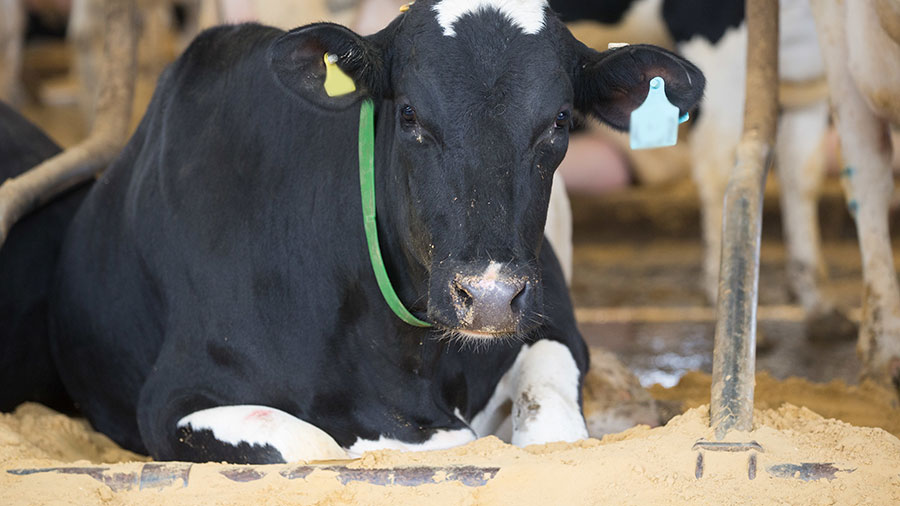Best dairy bedding for minimising mastitis-causing bacterium
 S. uberis can survive for at least five weeks on sand © Tim Scrivener
S. uberis can survive for at least five weeks on sand © Tim Scrivener A study carried out at the University of Nottingham has shown sawdust to be the best bedding for minimising the survival of the mastitis-causing pathogen streptococcus uberis (S. uberis.)
S. uberis is reported to be one of the most prevalent mastitis pathogens in the UK and its presence is often associated with environmental conditions, including bedding materials.
Ginny Sherwin, from the University of Nottingham, detailed some key findings from a recent study that compared the survival rate of S. uberis on different bedding substrates.
See also: How mastitis detection tech helped reduce antibiotics use
About the study and findings
The study looked at three different bedding samples – straw, sand and sawdust – which were first sterilised and then inoculated with a culture of S. uberis.
“We sterilised the bedding to ensure no other streptococci were present before starting. We then put the material into sterile tubes and left them for different periods of time,” explained Prof Sherwin.
“To summarise the clinical isolate findings, we found that S. uberis can survive for at least five weeks on straw and sand – though the ability to replicate is only possible if there is faeces/urine present.
“However, it was proved in the testing environment that the pathogen does not survive on sawdust for more than 48 hours.”
The study also looked into different mutations of the pathogen – hasA, mtuA, srtA, and vru – but there was no obvious link between these mutations and survival rates.
Sawdust
While the results point to sawdust as a favourable bedding material where S. uberis pressures are high, Professor Sherwin stressed that the study did have limitations.
This included:
- Inability to look at the impact of the microbiome
- Sterilisation of the bedding
- Impact of temperature in a natural setting.
“I am not suggesting that all bedding materials are immediately switched to sawdust, but it is interesting to think about why this trend may be occurring, though at the moment much is still unknown,” she said.
“The study also highlighted the importance of not being complacent with bedding, regardless of the substrate, and to manage it correctly in order to reduce the likelihood of S. uberis surviving and causing mastitis in cattle.”
AHDB bedding recommendations
- Keep bedding as dry as possible – bacteria multiply faster in warm, damp conditions
- Consider bedding conditioners such as lime to slow bacterial growth
- Ensure bedding materials are stored under a roof or waterproof cover
Prof Sherwin was speaking at the British Mastitis Conference (10 November 2021).
